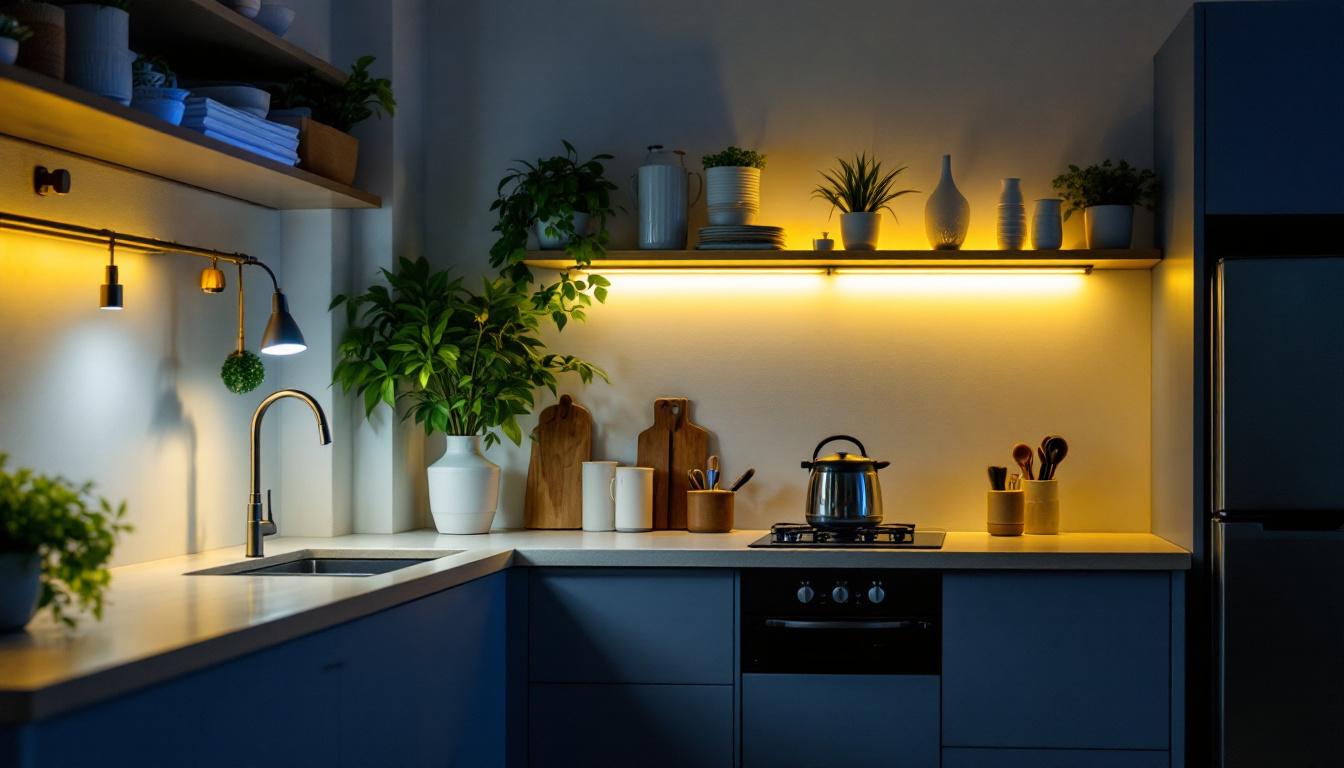
Under counter LED lighting has become a staple in modern residential and commercial spaces, prized for its energy efficiency, sleek design, and versatility. For lighting contractors, installing these systems offers an opportunity to enhance ambiance, improve functionality, and meet client expectations for contemporary lighting solutions. However, despite the relative simplicity of under counter LED installations, there are several common pitfalls that can compromise the final outcome.
Understanding these mistakes is crucial not only for delivering high-quality work but also for maintaining a strong professional reputation. This article explores the frequent errors lighting contractors encounter with under counter LED installations and offers practical advice to avoid them.
One of the most significant advantages of under counter LED lighting is its ability to create a warm and inviting atmosphere, particularly in kitchens and workspaces. By strategically placing LED strips or fixtures, contractors can illuminate countertops, making them more functional for tasks such as cooking or crafting. The right lighting can also highlight textures and colors in cabinetry and decor, transforming an ordinary space into a visually appealing environment. Moreover, the low heat output of LEDs ensures that surfaces remain cool, making them safe for use in areas where heat-sensitive materials are present.
Additionally, the technology behind LED lighting continues to evolve, offering contractors a range of options that cater to diverse client needs. From color temperature adjustments that allow users to switch between warm and cool lighting to smart LED systems that can be controlled via mobile apps, the possibilities are nearly limitless. This adaptability not only enhances user experience but also allows contractors to provide tailored solutions that can elevate their service offerings. By staying informed about the latest advancements in LED technology, contractors can position themselves as knowledgeable professionals in a competitive market, ultimately leading to increased client satisfaction and repeat business.
One of the most common mistakes contractors make is neglecting the importance of color temperature and Color Rendering Index (CRI) when selecting LED strips or fixtures. Under counter lighting is often used in kitchens, workspaces, or retail displays where accurate color representation is vital.
Using LEDs with a low CRI (below 80) can distort the appearance of surfaces, food, or products, leading to client dissatisfaction. Similarly, choosing a color temperature that is too cool (above 5000K) or too warm (below 2700K) can clash with the overall room lighting scheme, creating an unbalanced or unnatural look.
Contractors should consult with clients about the intended ambiance and select LED products with a CRI of at least 90 and a color temperature that complements the surrounding lighting—usually between 3000K and 4000K for under counter applications. Additionally, it is beneficial to consider the specific tasks that will be performed in the space. For instance, if the area is primarily used for cooking, a warmer light can enhance the appearance of food, while a cooler light may be more suitable for detailed tasks like reading recipes or crafting. Understanding the nuances of how different color temperatures affect mood and functionality can elevate the overall design and usability of the space.
Another frequent oversight is underestimating the brightness needed for effective task lighting. Under counter LEDs are often expected to illuminate countertops for food preparation or detailed work, which requires sufficient lumens output.
Installing strips with inadequate brightness can result in dim, ineffective lighting that frustrates users. Conversely, excessively bright LEDs may cause glare or harsh shadows. Proper lumen calculations based on the countertop size and room use are essential to achieve balanced illumination. It’s also worth noting that the finish of the countertops can influence how light is perceived; for example, glossy surfaces may reflect light differently than matte finishes, potentially requiring adjustments in brightness levels. Furthermore, layering different types of lighting—such as combining under counter LEDs with ambient or task lighting—can create a more dynamic and functional environment, enhancing both aesthetics and practicality.
Power supply placement is a critical aspect of under counter LED installations that is frequently overlooked. Many contractors install LED strips without considering the location of transformers or drivers, which can lead to visible wiring, difficult maintenance, or even safety hazards.
Ensuring that power supplies are discreetly hidden yet accessible for future servicing is vital. This often means planning the layout to accommodate power sources near cabinetry or within adjacent walls, while adhering to electrical codes and manufacturer guidelines. Additionally, the choice of power supply can impact the overall efficiency and performance of the LED system. For instance, using a power supply with a higher wattage than necessary can lead to energy waste, while an undersized unit may struggle to deliver adequate power, resulting in dim lighting or flickering. Therefore, selecting the right power supply not only enhances the aesthetic appeal of the installation but also ensures optimal functionality and longevity of the LED strips.
Accurate measurement of LED strip lengths is essential to avoid gaps or excessive overlaps. A common mistake is cutting strips incorrectly or failing to use connectors properly, which can cause uneven lighting or damage to the LED circuitry.
Contractors should carefully measure the under counter space, allowing for any corners or obstacles, and follow manufacturer instructions for cutting points and connection methods. Using high-quality connectors and ensuring secure soldering or clip connections will prevent flickering and premature failures. Furthermore, it is advisable to account for the thermal expansion of LED strips, especially in environments that experience significant temperature fluctuations. This can affect the adhesive backing and overall adhesion of the strips, potentially leading to peeling or detachment over time. By taking these factors into consideration, contractors can create a more reliable and visually appealing lighting solution that stands the test of time.
For LED strips to adhere securely and maintain their position over time, the mounting surface must be clean, dry, and smooth. Contractors sometimes rush this step, leading to strips peeling off or sagging after installation.
Proper surface preparation involves cleaning with isopropyl alcohol to remove grease or dust and ensuring the surface is free from irregularities. In some cases, using mounting channels or aluminum profiles not only enhances adhesion but also improves heat dissipation, extending LED lifespan.
Heat buildup is a subtle but critical factor that can drastically reduce LED performance and longevity. Under counter areas often have limited ventilation, making heat dissipation challenging.
Failing to use aluminum channels or heat sinks can cause LEDs to overheat, leading to color shifts, dimming, or early failure. Lighting contractors should incorporate thermal management solutions into their designs, especially for high-output or continuous LED strips.
Electrical errors are among the most serious mistakes lighting contractors can make. These include using improper gauge wires, insufficient insulation, or loose connections, all of which can cause flickering, shorts, or even fire hazards.
Adhering to local electrical codes, using appropriate wire sizes, and securing all connections with solder or high-quality connectors are mandatory practices. Additionally, testing the system thoroughly before finalizing the installation ensures reliability and client safety.
Many clients expect under counter LEDs to be dimmable for mood setting or energy savings. A common contractor mistake is installing non-dimmable LED strips or drivers without informing clients, resulting in dissatisfaction and costly replacements.
Contractors must verify that both the LED strips and power supplies support dimming functions and are compatible with the chosen control systems, whether they be wall dimmers, remote controls, or smart home integrations.
Voltage drop over long runs of LED strips can cause uneven brightness and flickering, especially when dimming is involved. This issue is often overlooked during the design phase.
To mitigate voltage drop, contractors should use thicker gauge wiring, limit the length of LED runs, or employ multiple power injection points. Proper planning ensures smooth dimming performance and consistent illumination across the entire under counter area.
Contractors sometimes neglect to educate clients about the capabilities and limitations of under counter LED lighting. This can lead to unrealistic expectations regarding brightness, color, or control features.
Providing clear information about what the LEDs can achieve, maintenance requirements, and potential issues helps clients make informed decisions and reduces the likelihood of post-installation complaints.
After installation, some contractors fail to demonstrate how to operate dimmers, timers, or smart controls. This oversight can leave clients confused or frustrated, diminishing the perceived value of the installation.
Taking the time to walk clients through the system, answer questions, and provide written instructions enhances customer satisfaction and encourages positive referrals.
Under counter LED lighting offers tremendous benefits, but avoiding common mistakes is essential for delivering professional, lasting results. Lighting contractors should prioritize careful product selection, meticulous planning, proper installation techniques, and thorough client communication.
By focusing on color accuracy, brightness, heat management, electrical safety, and control compatibility, contractors can ensure that their under counter LED projects meet or exceed client expectations. Furthermore, educating clients about system operation and maintenance fosters trust and long-term satisfaction.
Ultimately, attention to detail and adherence to best practices will distinguish skilled lighting contractors in a competitive market, driving repeat business and enhancing their professional reputation.
Ready to elevate your lighting projects with the highest quality under counter LEDs? Look no further than LumenWholesale. Our spec-grade lighting products are designed to meet the needs of the most discerning contractors, offering exceptional performance without the premium price tag. With our direct-to-contractor wholesale approach, you’ll enjoy the best value for your investment. Plus, with free shipping on bulk orders, you can stock up on superior lighting solutions effortlessly. Don’t let common installation mistakes set you back—choose LumenWholesale for reliability and excellence in lighting. Wholesale Lighting at the Best Value is just a click away.

Discover the transformative benefits of wall mount shop lights for your lighting installation projects.

Discover essential insights into LED Type B wiring with our comprehensive guide tailored for lighting contractors.

Discover the transformative power of industrial wall lights and why they’re a must-have for every lighting contractor.

Explore the advantages and drawbacks of outdoor solar light posts for lighting contractors.